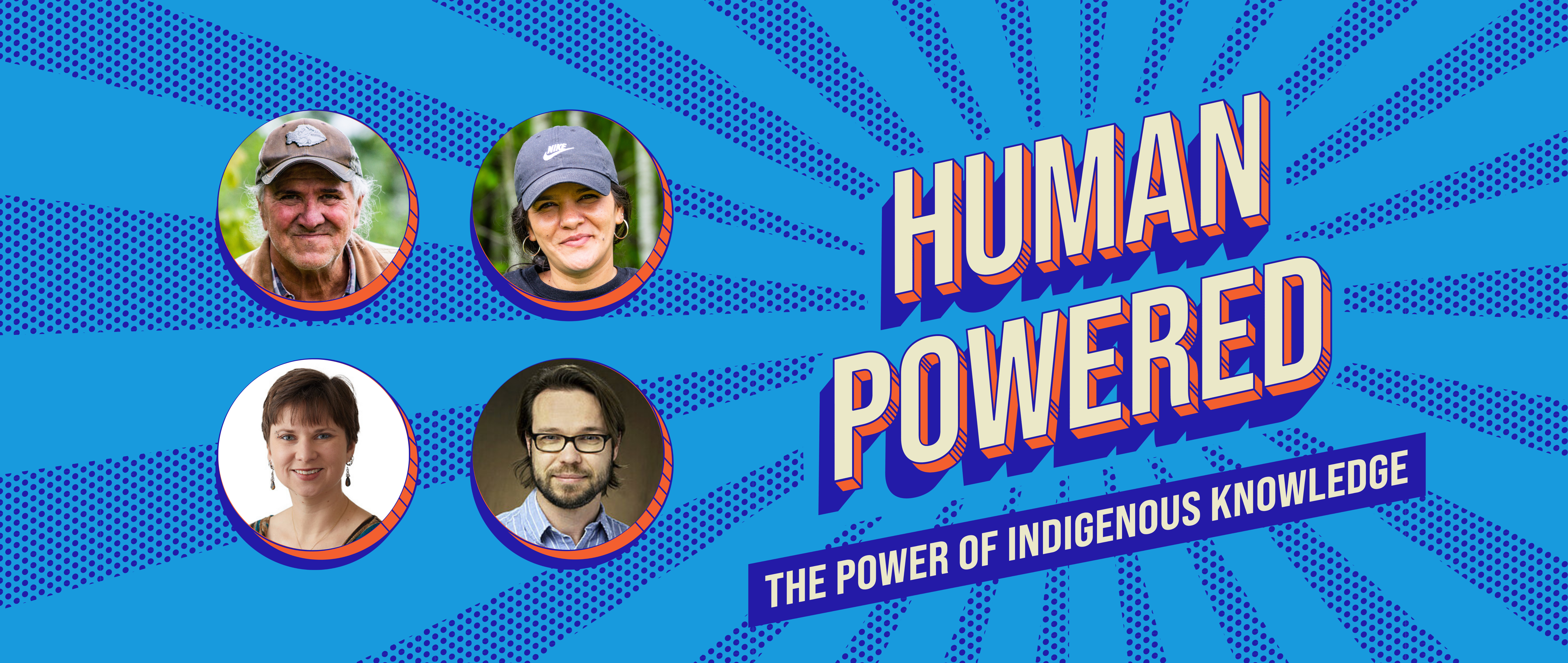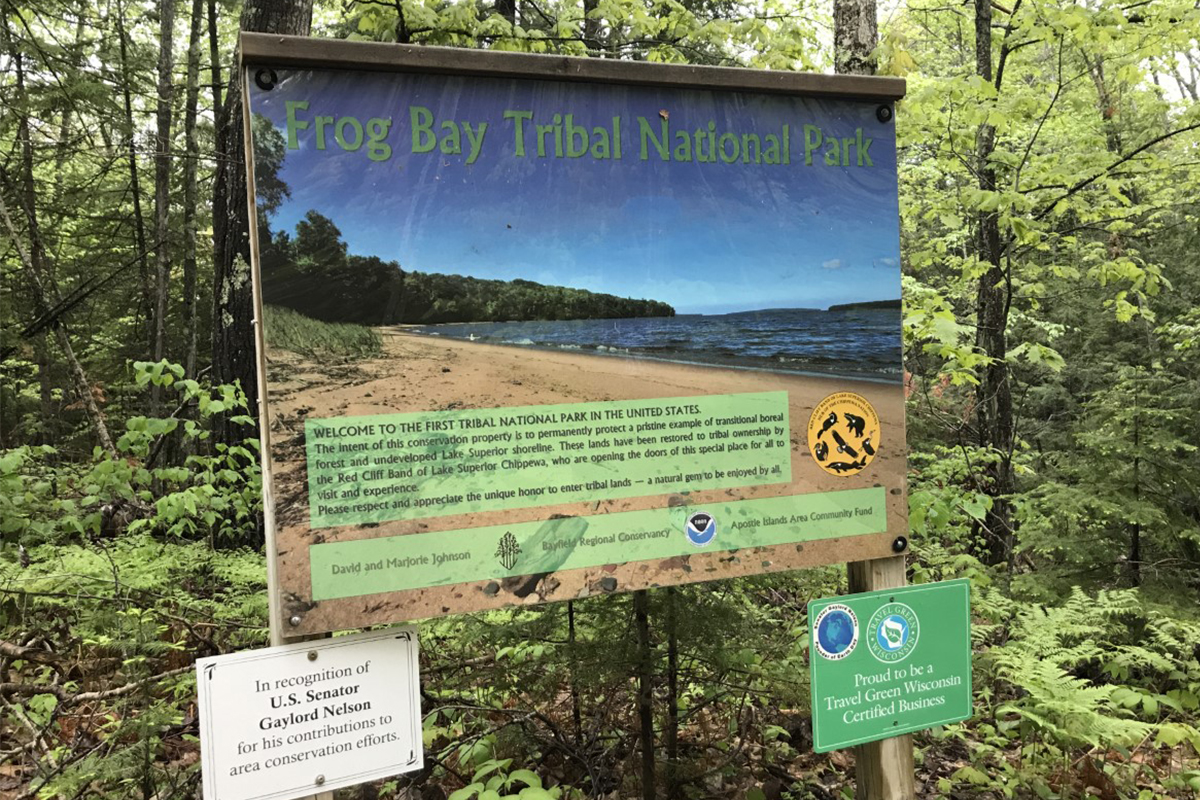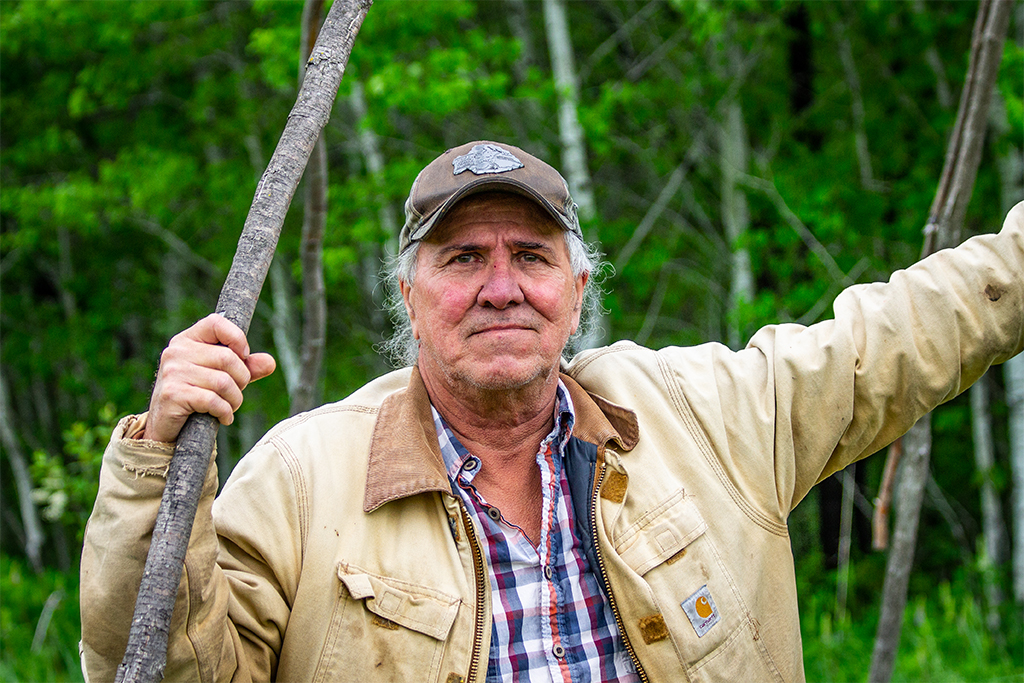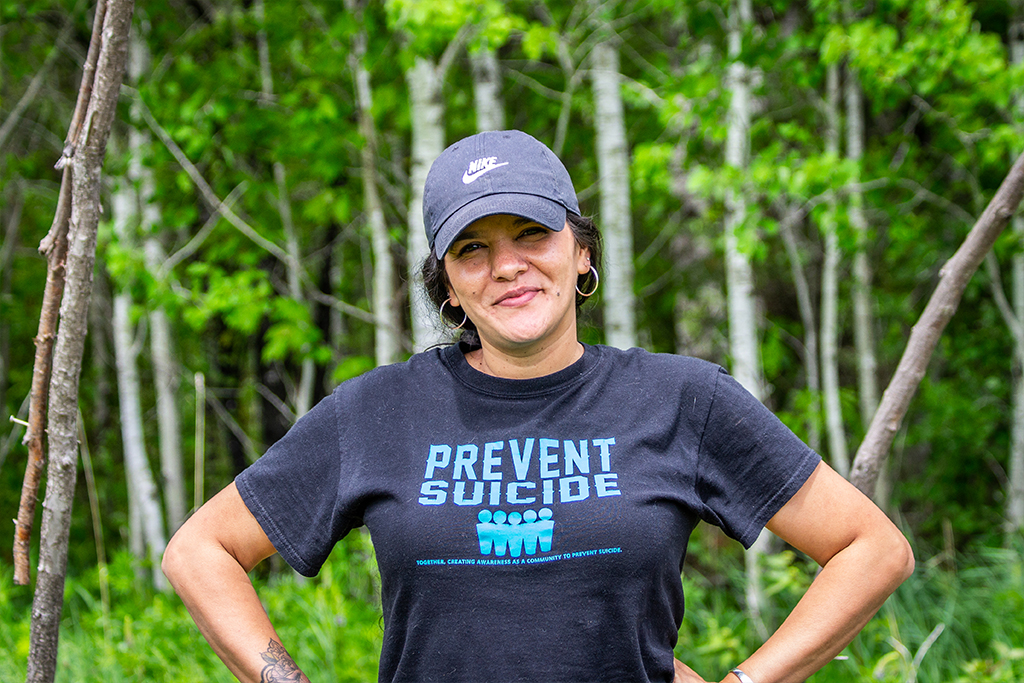
Episode 5: The Power of Indigenous Knowledge (with Marvin Defoe)
This episode starts with a meal around a fire, in a place where people have been cooking and eating for more than 5,000 years. Our hosts are Marvin Defoe and Edwina Buffalo-Reyes, members of the Red Cliff band of Lake Superior Ojibwe in Bayfield County. For the last three years, the Red Cliff Tribal Historic Preservation Office has been collaborating with two archaeologists helping excavate sites on tribal lands. Listen to hear what they are doing to reclaim and revitalize the deep history and culture of their people—and to help train a new generation of scholars committed to centering indigenous knowledge.
Listen & Subscribe
You can subscribe and share with friends in your preferred podcast app:
Apple podcasts, Spotify, Google Podcasts, Pocketcasts, Podcast Addict
Video of Anishinaabe Microwave
While the Human Powered production team visited the Red Cliff Reservation, with Edwina Buffalo-Reyes (Assistant Tribal Historic Preservation Officer) and Alex Breslav (Indigenous Arts and Sciences Coordinator) demonstrated how to use hot rocks to cook in a cedar log. They prepared a meal of Lake Superior trout, wild rice, wild ramps (onions), and other wild greens. Marvin Defoe likes to call it an Anishinaabe microwave and uses this demonstration as a way to connect people today with technologies used by people in the Great Lakes region for over 5,000 years.
This video was recorded by Stanley Schrock, Red Cliff Tribal Communications Manager, in May 2021.
Act 31
To learn more about Act 31, a state law passed in 1989 that requires that all students in Wisconsin learn about the history, culture, and tribal sovereignty of Wisconsin's federally recognized tribes, check out these resources and this book by JP Leary. Leary is an associate professor at the University of Wisconsin-Green Bay’s Education Center for First Nations Studies.

Frog Bay Tribal National Park
Frog Bay Tribal National Park (FBTNP) is the first tribal national park in the United States. The park is managed by Red Cliff’s Treaty Natural Resources Division and has carefully planned infrastructure with respect to the sensitive habitats within the park. This includes 1.7 miles of trails and interpretive signs.
Red Cliff puts special emphasis on the sustainable management of natural resources, both on the Reservation and in the Chippewa ceded territories. Frog Bay Tribal National Park permanently protects 175 acres of rare boreal forest, the lower estuary and mouth of Frog Creek, and an undeveloped portion of the Lake Superior shoreline.
Frog Bay Tribal Park is open to visitors. However, it is located within the larger Frog Creek Conservation Management Area. In order to preserve cultural and historical use of this special place, the Conservation Management Area is accessible only to tribal members.
Learn more about Frog Bay Tribal National Park here.
Timeline of Anishinaabe Treaty Rights in the Great Lakes
The Great Lakes Indian Fish & Wildlife Commission is commonly known by its acronym, GLIFWC. GLIFWC represents eleven Ojibwe tribes in Minnesota, Wisconsin, and Michigan who signed the Treaties of 1837, 1842, and 1854 with the United States government.
This map shows the land that the tribes ceded, or sold, in northern Michigan, Wisconsin, and Minnesota. In the Treaties, tribal members retained the rights to hunt, fish, and gather in the ceded territories. Check out this guide to understanding Ojibwe Treaty Rights.
Additional resources from Great Lakes Fish & Wildlife Commission include a collection of short videos.
You can print out the poster, pictured above, or order a copy, along with language resources, a cookbook and other books, and additional posters here.
@lovewisconsin Some WI Native American facts! W our collaborator Ma’iingan. #nativetiktok #wisconsincheck #lovewisconsin #nativeamerican
♬ original sound - We ❤️ WI
Whose land do you live on?
Check out this TikTok from Love Wisconsin producer Ma'iingan and follow Love Wisconsin on TikTok!
Each of the six Ojibwe bands in Wisconsin has a reservation.
By the time the treaty lands of 1825 were established, the Ojibwe, Menominee, Potawatomi, and Ho-Chunk had ceded the lands that eventually became the state of Wisconsin. During that same decade, the Oneida and Mohican (Stockbridge-Munsee Bands) resettled in Wisconsin from New York State. Today Wisconsin has more reservations and tribal lands than any other state east of the Mississippi River. Each Nation has its own unique history, traditions, and rituals.
This interactive map shows the tribal lands and treaty lands in the Northern Great Lakes. It is part of The Ways: Great Lakes Native Culture & Language, an online educational resource for 6-12 grade students that features videos and digital media exploring contemporary Native culture and language. The stories center on Native communities around the Northern Great Lakes, including a story about commercial fishermen from the Red Cliff Band of Lake Superior Chippewa. The resources were developed by PBS Wisconsin Education to support educators in meeting the requirements of Wisconsin Act 31.
The Ways is a great place to start for information about modern Native identity and communities, as well as historical context.
Gete Anishinaabeg Izhichigewin Community Archaeology Project
The archaeological work and field school described in this episode was funded in part with a Major Grant from Wisconsin Humanities.
And in 2020, The Red Cliff Band of Lake Superior Chippewa received a $50K Tribal Heritage Grant award to continue its Gete Anishinaabeg Izhichigewin Community Archaeology Project. Funding for the Tribal Heritage Grant program is made available by the Historic Preservation Fund and is administered by the Department of Interior National Park Service.
Red Cliff is one of only 13 award recipients nationwide to receive one of these tribal heritage grants.

Marvin
Marvin Defoe is an educator, teacher, birch bark canoe builder, and Red Cliff elder. He grew up in the Red Cliff community and is part of the Sturgeon clan. Named Shingway Banase in Anishinaabe, he is passionate about maintenance and revitalization of the Ojibwe language. Marvin is past Vice Chair on the tribal council and has been the Tribal Historic Preservation Officer for four years. Learn more about the Red Cliff Ojibwe from Marvin in this video from PBS and Wisconsin First Nations educational resources.

Edwina
Edwina Buffalo-Reyes is from Red Cliff and of the Eagle clan. In her words, "Ziigwaanikwe nindizhinikaaz. Miskwaabekaang nindoonjibaa. Migizi nindoodem. I am a mother first and always. I have three children - one adult and two still living at home. My passion is serving my community in all aspects and spectrums of need. I am currently the Assistant Tribal Historic Preservation Officer for my community. My life path has come full circle and has returned me to my community to raise my children and learn as much as I can about the history and ways of life of my people, the Anishinaabe - past and present."

Heather
Heather Walder is a lecturer in the Department of Archaeology and Anthropology at the University of Wisconsin, La Crosse, and a research associate at the Field Museum in Chicago, Illinois. Since 2018, she has co-directed Gete Anishinaabeg Izhichigewin Community Archaeology Project, a collaborative endeavor of the Red Cliff Band of Lake Superior Chippewa and academic archaeologists. Her research interests include copper metallurgy and glass bead studies to better understand Indigenous trade networks of eastern North America.

John
John Creese is an anthropological archaeologist in the Department of Sociology and Anthropology at North Dakota State University. His current fieldwork focuses on collaborative Indigenous archaeology in the Western Great Lakes region of North America. He has published on topics such as rock art and relational ontologies, emotion-work and material culture, and Iroquoian architecture and settlement organization. Dr. Creese is also currently serving as the Editor-in-Chief of the Canadian Journal of Archaeology.
SUBSCRIBE TO OUR NEWSLETTER
Get the latest information about our podcasts and other news by subscribing to our newsletter.
Episode Credits
Host: Jimmy Gutierriez
Senior Producer: Craig Eley
Producers: Jessica Becker, Jen Rubin, and Jade Iseri-Ramos
Executive Producers: Brijetta Hall Waller and Dena Wortzel
Photographers: Stanley Schrock, Jessica Becker and Jen Rubin




